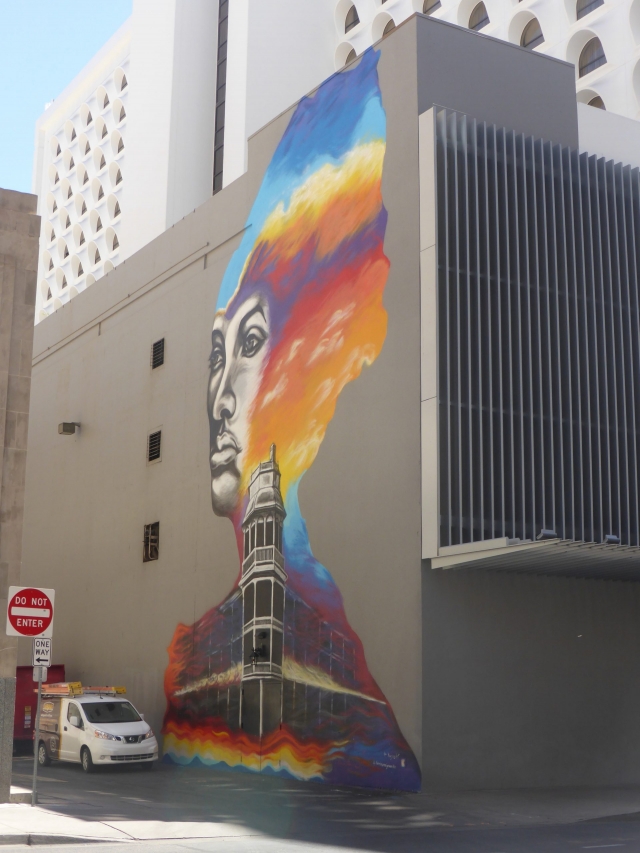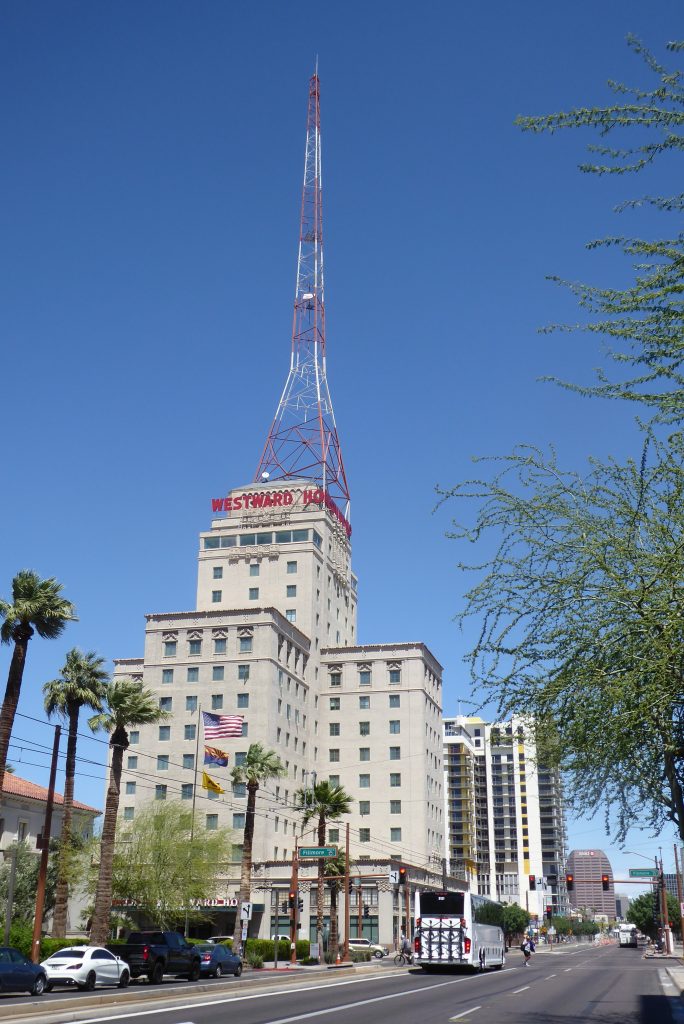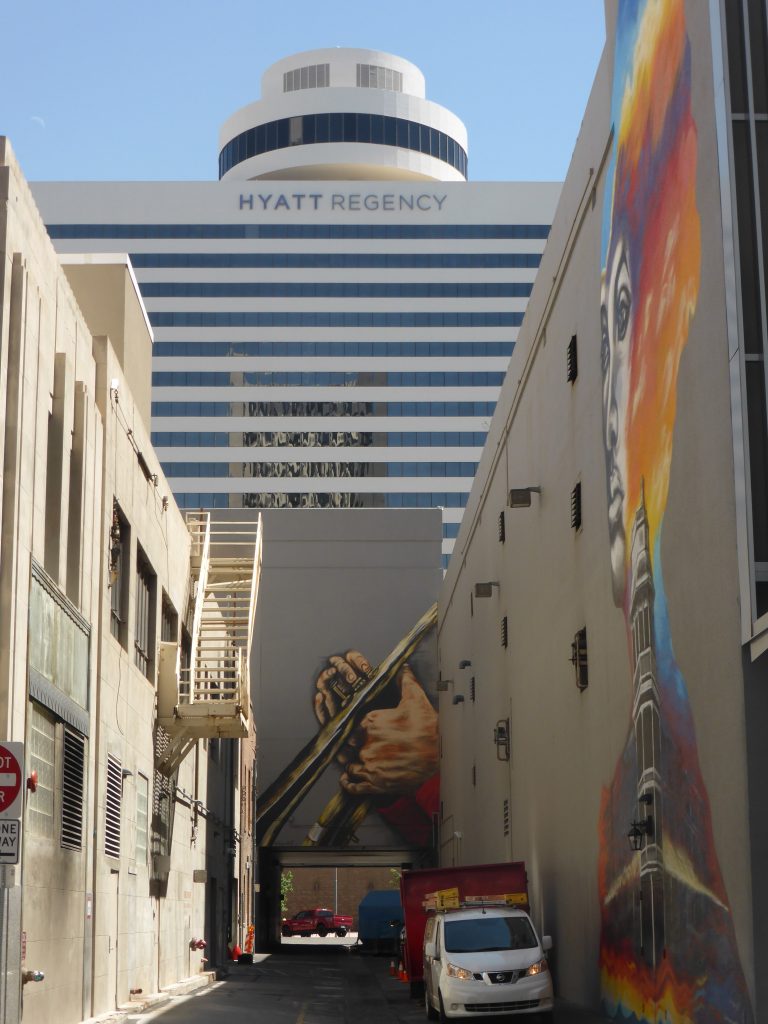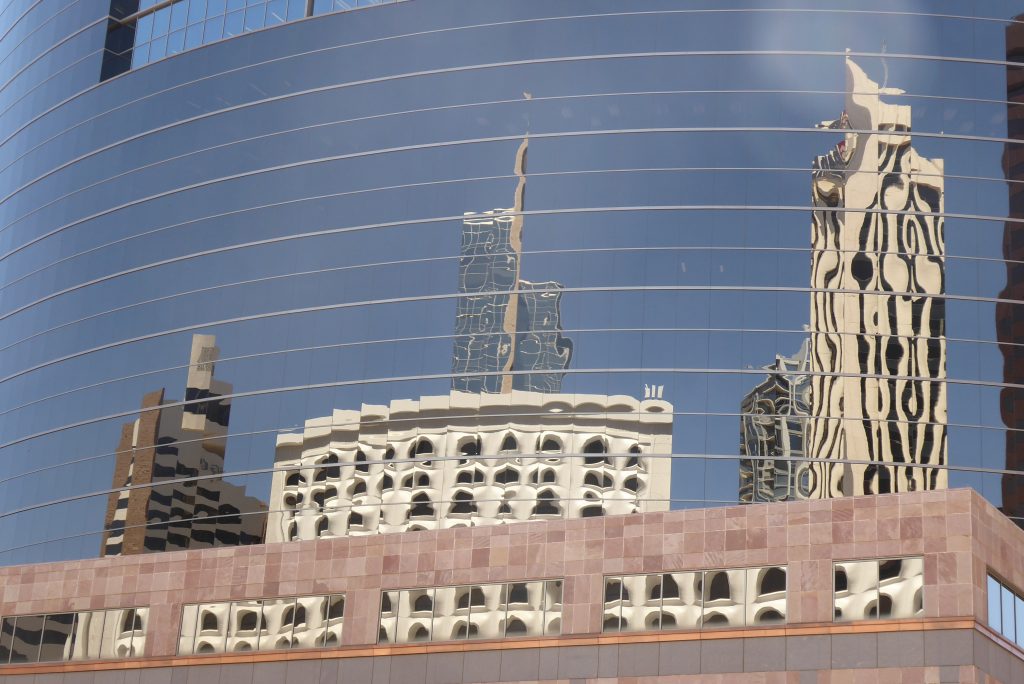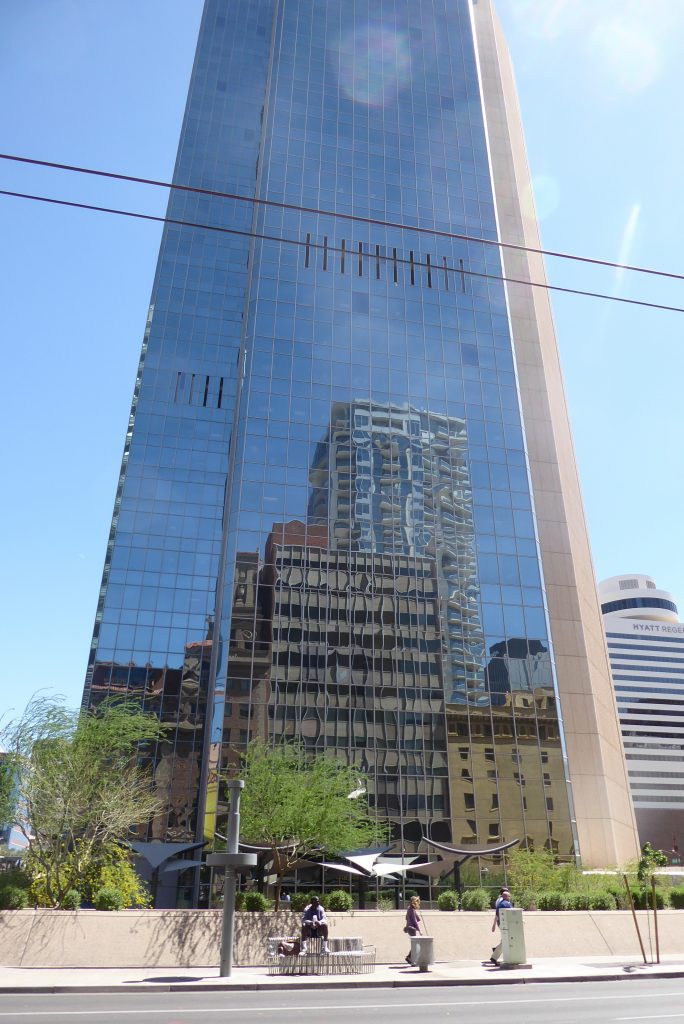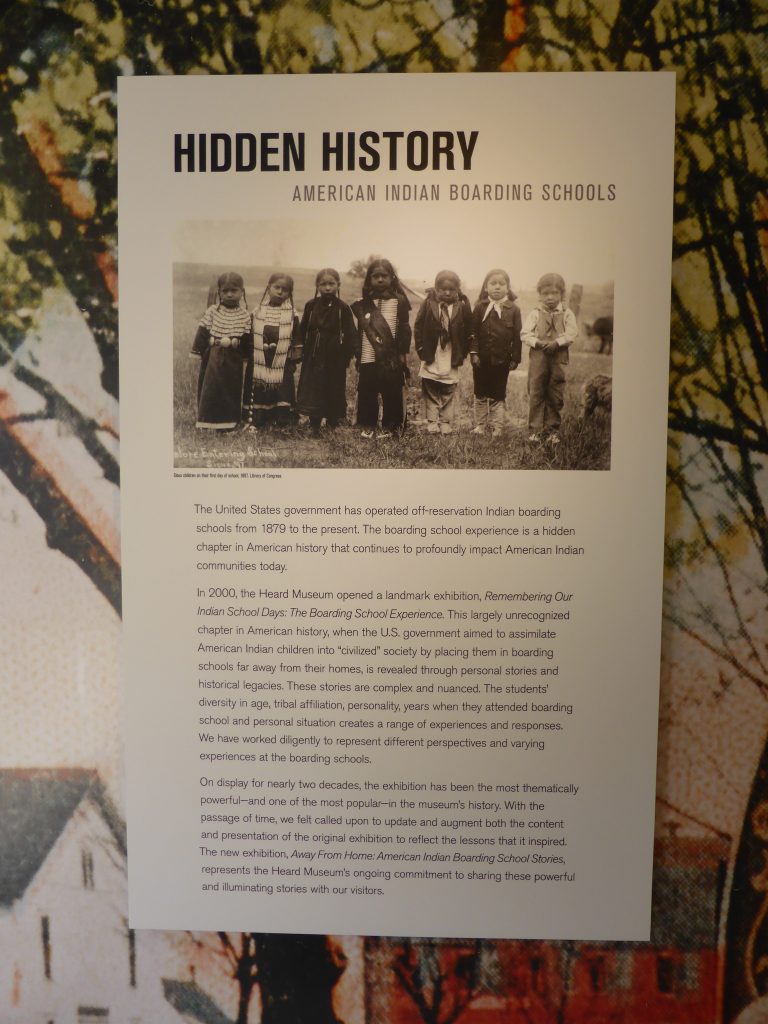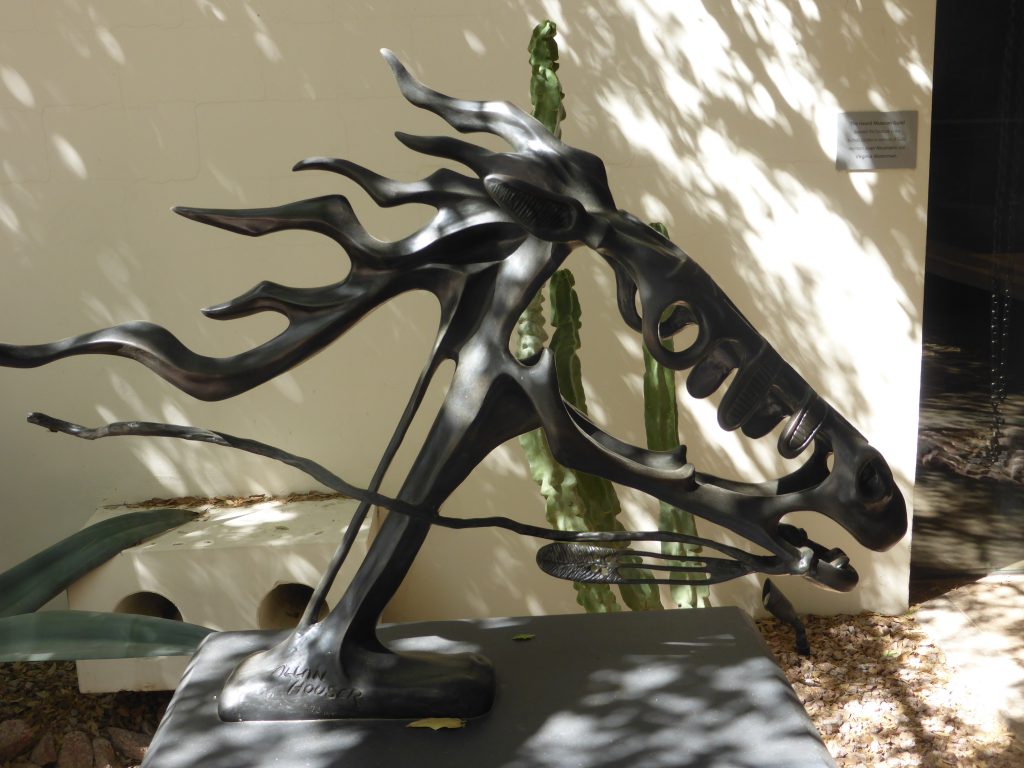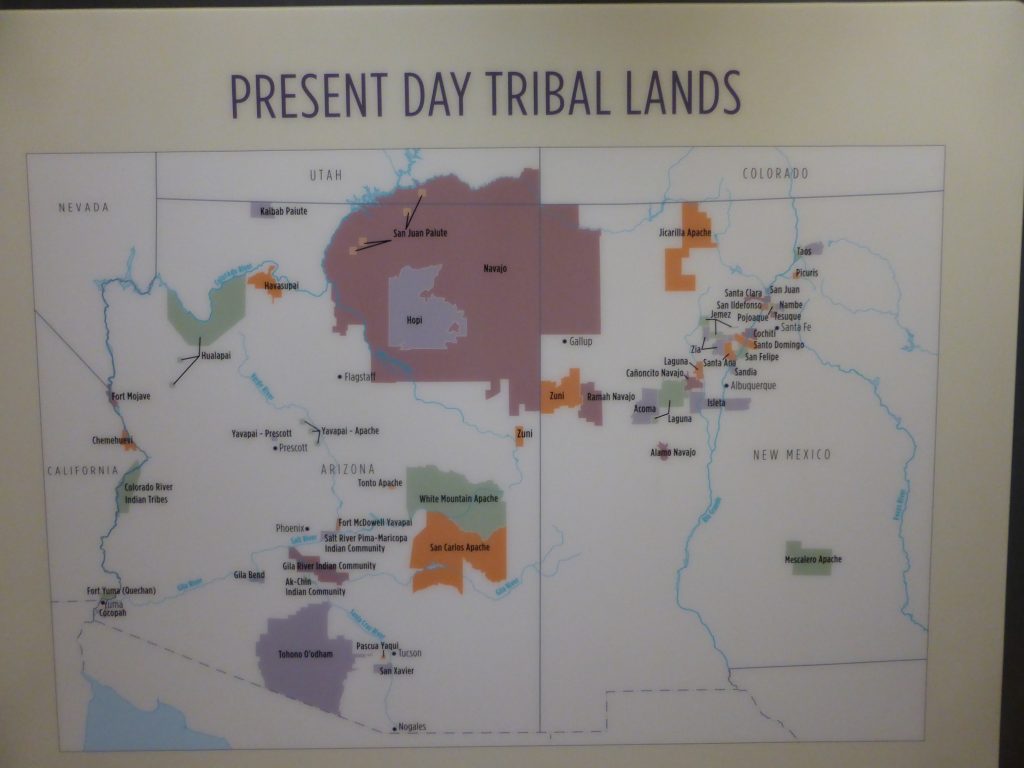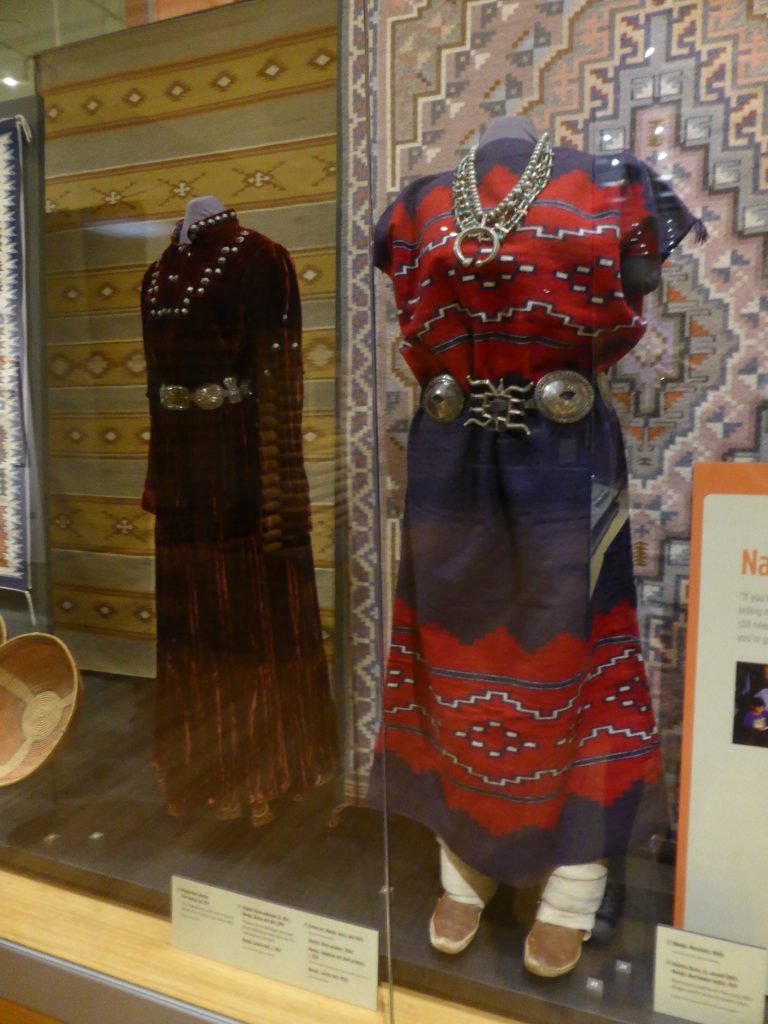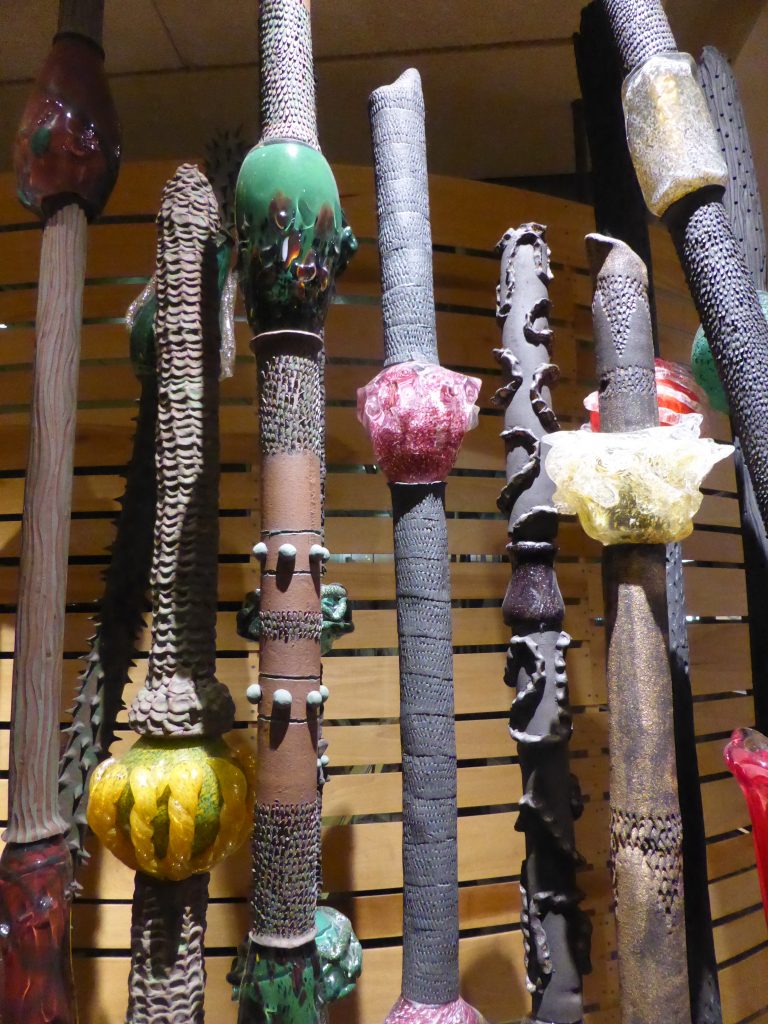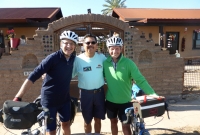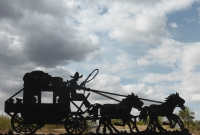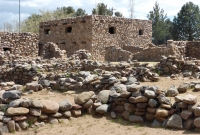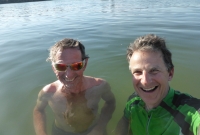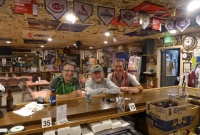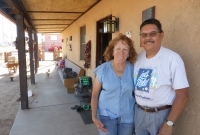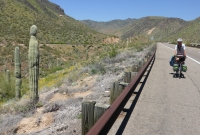When you’ve only got one day in a major city, it’s almost impossible to know where to go, but over a fabulous Mexican breakfast of huevos rancheros, cooked by Susan, our hosts gave us a whole list of possibilities before we cycled out to explore downtown.
We opted for two museums. Our first stop took us to the Heard Museum. It’s a private, not for profit dedicated to the advancement of Native American Art, but also includes several exhibitions detailing the history of many of the tribes, as well as exploring the effect the arrival of Europeans had on their culture and society.


If you are interested in Native American history it’s highly recommended. It’s a celebration of Native American culture, but it also holds no punches when exploring ways in which tribes were treated as their land was taken from them and their way of life and freedoms came to a rapid end.
One of the key exhibits ‘Away from Home: American Indian Boarding School Stories’ is a powerful reminder of how, beginning in the 1870s, the U.S. government aimed to assimilate Native Americans into ‘civilised’ society by placing them in government-operated boarding schools.
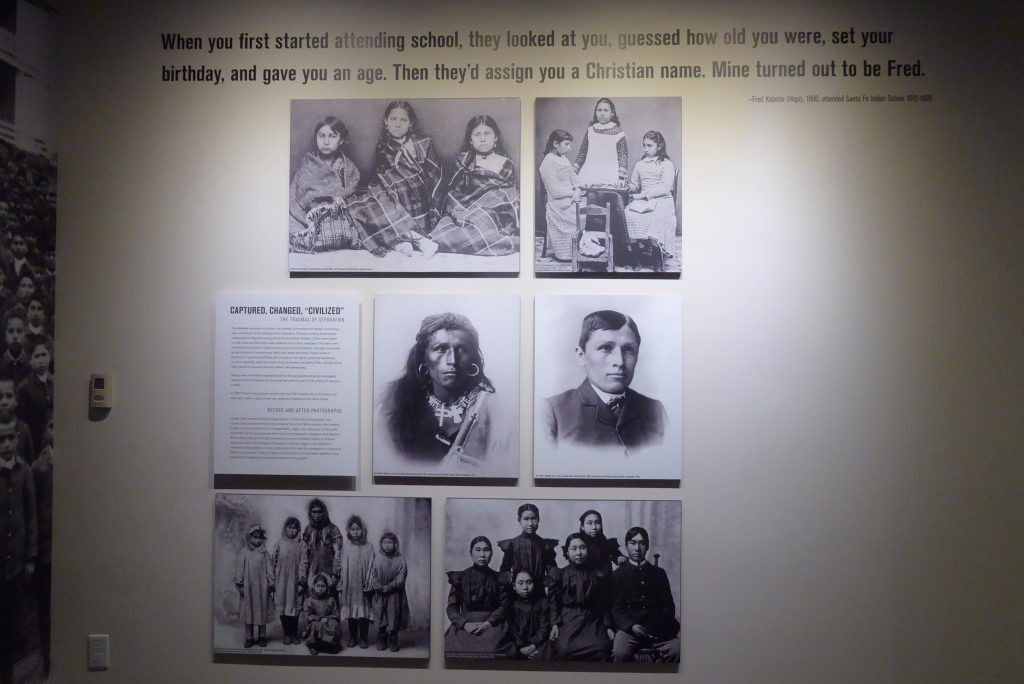
-Richard H. Pratt, 1892
Children were taken from their families and transported far away where all traces of their culture were removed, their hair was cut and their tribal names were replaced with European ones. There was no question of celebrating, or understanding tribal customs and history, the idea was to wipe out this rich history and transform them into ‘model’ citizens.

I knew this kind of policy had been inflicted on the Aboriginis in Austrailia, but had no idea it was also used in the United States. If it wasn’t enough that their land, homes, food source and society had been taken away, now the U.S. government was attempting the wholesale removal of any trace of their long and proud history and customs. It’s just appalling and even more upsetting is that it’s still going on across the world today. Just look at the Uyghur re-education camps in China.
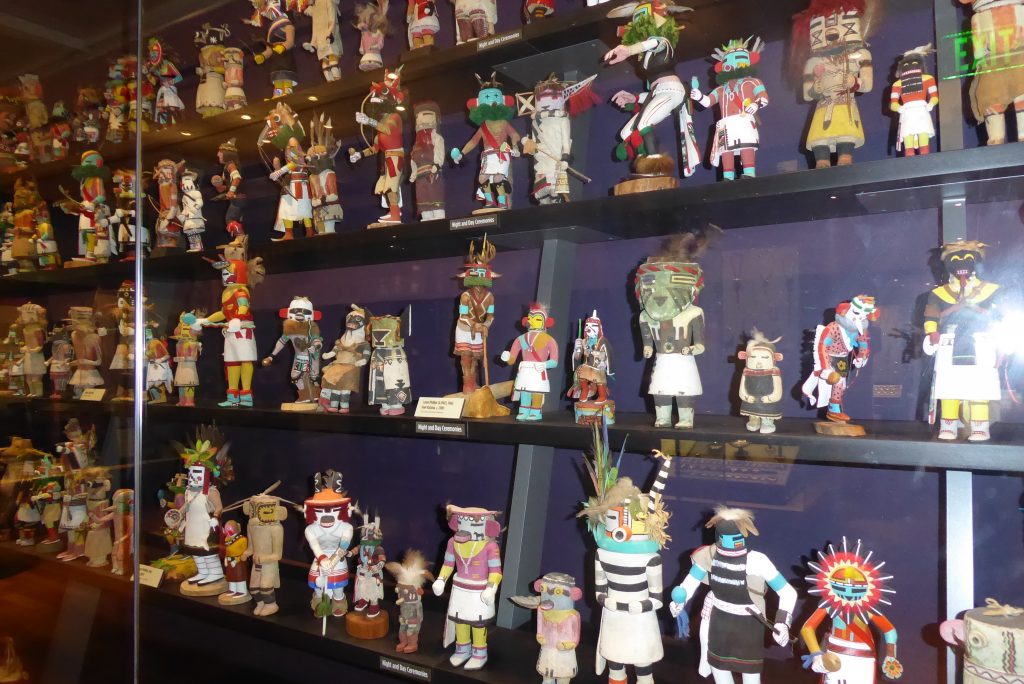

Fortunately, despite these injustices, much of Native American culture and its traditions have survived and is now being recognised, promoted and appreciated. The museum contained fascinating examples ranging from colourful Navajo carpets to Hopi Katsina figures.
These dolls represent spirits, natural elements, animals or deceased ancestors of the Hopi. They are intricately carved and are passed onto the daughters of a village during a special ceremony. The tradition, which dates back to the 1850s, continues today.

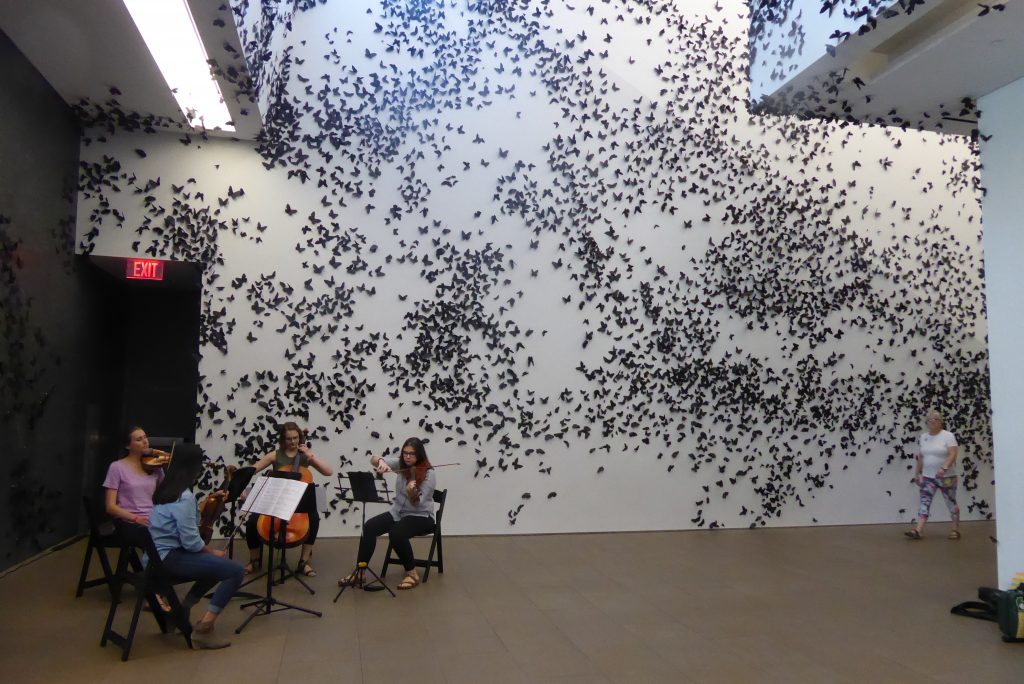
We also visited the Phoenix Art Museum which was equally impressive and contained some intriguing exhibits including ‘Black Cloud’ a work of 25,000 paper moths and butterflies by Mexican artist Carlos Amorales which had ‘landed’ all over the building’s walls.

There was also an incredible artwork made up entirely of lights inside a darkened room which changed colour as you walked through. Unable to see the floor, ceiling or walls, it was a fascinating, if rather unsettling work.
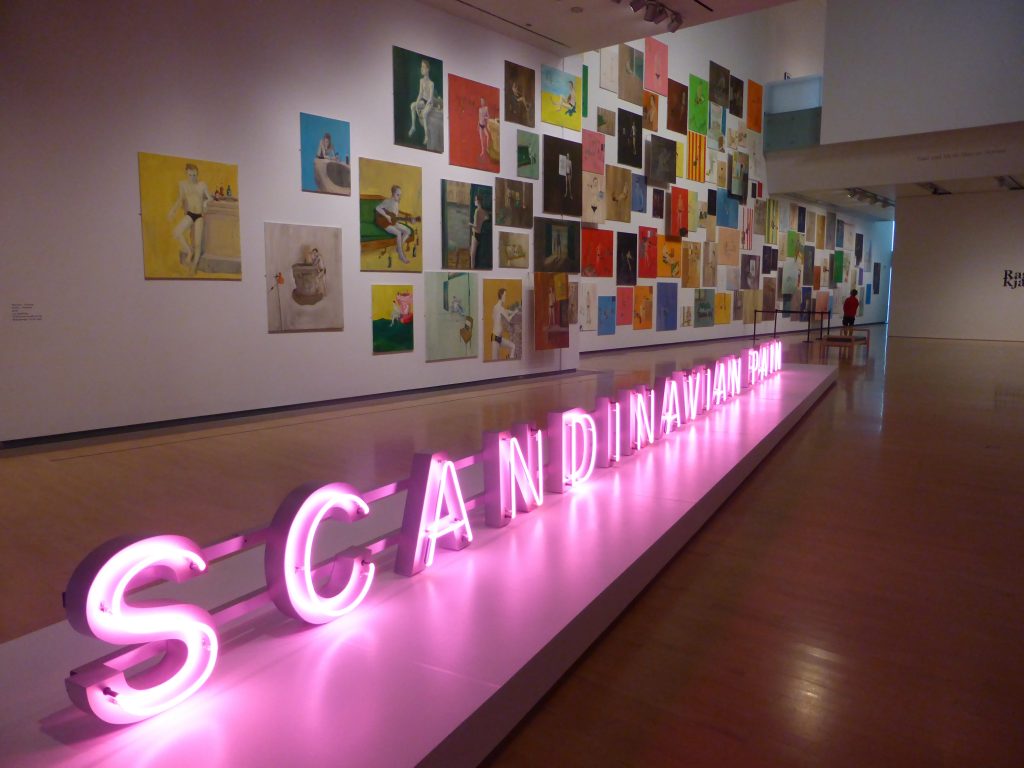
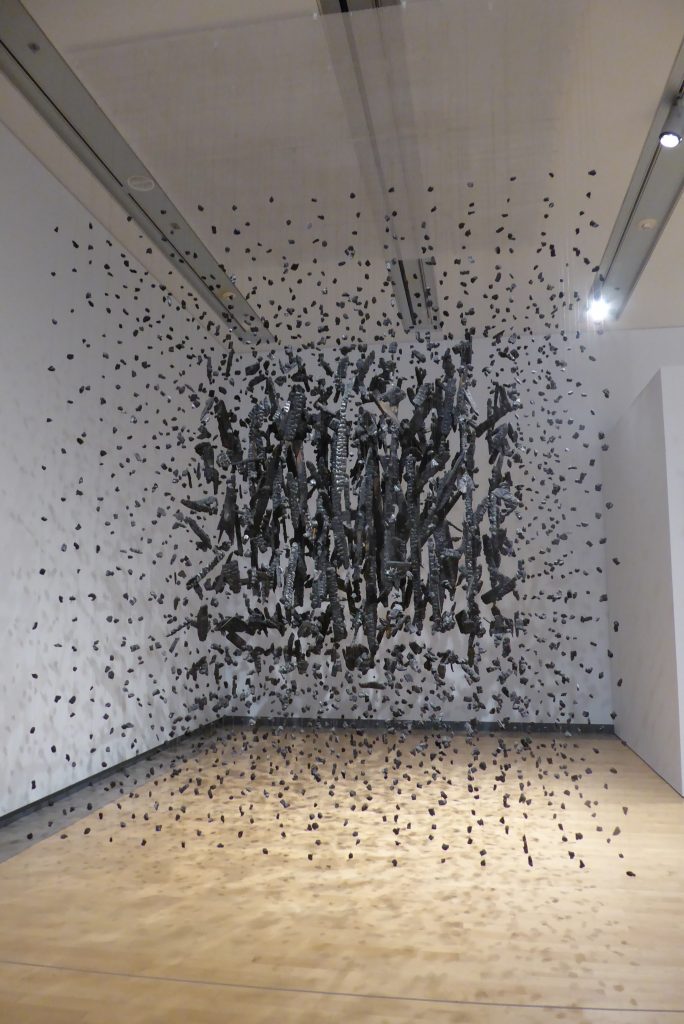
Cornelia Parker’s ‘Mass’ was composed of burnt wood, wire and strong and was made from the charred remains of a Texas Baptist Church struck by lightning and getting across the idea that matter is never destroyed, just transformed.
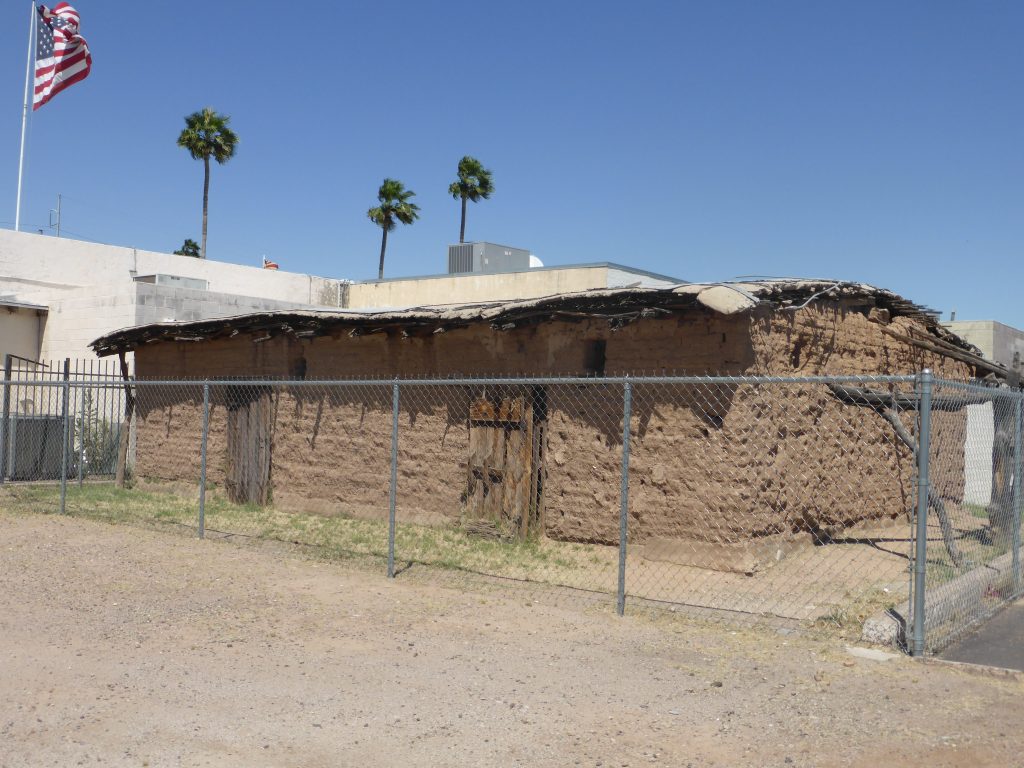

We also had time to find out more about Phoenix’s history by going with Silverio and Susan to the oldest standing structure in the city. Called the Duppa Homestead it was built around 1870 by Darrell Duppa, a Cambridge-educated man from Kent who is considered one of the founders of Phoenix.
It is made of mud adobe and covered with a roof constructed of Cottonwood branches and earth. It’s thought it was probably an agricultural out-building and is now managed by the Arizona Historical Society. Silverio and Susan said it had once been open to the public, but there were now concerns about how to preserve it for the future.
We ended an excellent day by taking this incredible couple out to dinner at a local Indian restaurant. We are going to miss their company and Phoenix too – although I’m not sure I’d want to be there in August when temperatures can well exceed 100F. Time to hot foot it to San Diego.
Phoenix architecture:
The Heard Museum:

